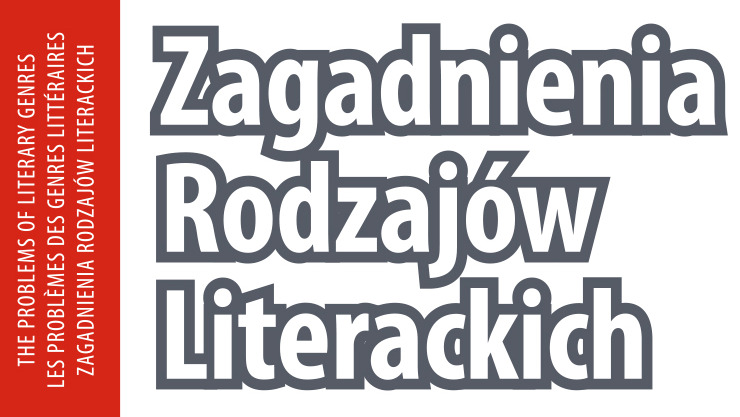Under Her Hat: Glimpses of Bonnet View
DOI:
https://doi.org/10.26485/ZRL/2020/63.1/11Słowa kluczowe:
tableau, bonnet view, R. Andersson, L. von Trier, K. Reichardt, C.Th. DreyerAbstrakt
The paper introduces the concept of tableau as articulated by film history and theory, with examples from the films of Roy Andersson, Jean-Luc Godard and Lars von Trier. A lesser known tradition, the bonnet view originates from Kelly Reichardt’s western Meek’s Cutoff which set out to tell the story from “the point of view of the woman who pours John Wayne’s coffee.” By replacing generic conventions, notably the customary widescreen with a square-like image, Meek’s Cutoff conveys the visual and social restrictions signified by women’s bonnets. The bonnet view is further traced in the tableaus of TV-series Handmaid’s Tale and other cinematic portrayals of women’s history ( Jessica Hausner's Amor Fou and Carl Th. Dreyer’s The Day of Wrath), exploring its potential as a vehicle of the female gaze.
Liczba pobrań
Bibliografia
Andersson Roy (2009), Vår tids rädsla för allvar, Studio 24, Stockholm.
Atwood Margaret (1986), The Handmaid’s Tale, Ballantine Books, New York.
Barthes Roland (1977), Image–Music–Text, Fontana, London.
— (1980), Camera Lucida, Hill and Wang, New York.
Bazin André (2009), Šta je film? (I–IV), YU FILM DANAS XXII nr 1–2 (90/91), Novi Sad: 3D+.
Bellour Raymond (1990), The Film Stilled, “Camera Obscura” 8 (23–24), 98–124.
Bordwell David (2005), O povijesti filmskoga stila, HFS, Zagreb.
— (1981), The Films of Carl-Theodor Dreyer, University of California Press, Berkeley.
Brakhage Stan (1972), The Brakhage Lectures: George Méliès, David Wark Griffith, Carl Theo¬dore Dreyer, Sergei Eisenstein, The Goodlio, Chicago.
Brodén Danie (2010), Vad är det som har hänt? Om Roy Andersson och den urspårade välfärds¬staten [in:] Motsträviga synsätt: om rörliga bilder som bjuder motstånd, eds. Rönnberg M., Westling K., Filmförlaget, Visby, 23 44.
Burch Noël (1991), In and out of Synch. The Awakening of a Cine-dreamer, Scolar Press, Alder¬shot, England.
Campany David (2008), Photography and Cinema (Exposures), Reaktion Books, London.
Dalle Vacche Angela (1996), Cinema and painting: how art is used in film, University of Texas Press, Austin.
Deleuze Gilles (1989), Cinema 2: The Time-Image, The Athlone Press, London – New York.
Dreyer Carl Theodor, Skoller Donald (1973), Dreyer in Double Reflection Translation of Carl Th. Dreyer’s Writings about the Film, Da Capo, New York.
Gorfinkel Elena (2015), Exhausted Drift: Austerity, Dispossession and the Politics of Slow in Kelly Reichardt’s Meek’s Cutoff [in:] Slow Cinema, eds. Luca T. de, Barrados J.N., Edinburgh UP, Edinburgh, 123–136.
Hall Dawn (2014), American Independent Female Filmmakers: Kelly Reichardt in Focus, Pro¬Quest, UMI Dissertations Publishing, Ann Arbor.
Heath Stephen (1976), Narrative Space, “Screen”, Vol. 17, Issue 3, 68–112.
Kracauer Siegfried (1995), The Mass Ornament: Weimar Essays, Harvard UP, Cambridge MA.
— (1971), Priroda filma I, Institut za film, Beograd.
MacCabe Colin (2011), Riviera Eschatology, “Film Quarterly”, Vol. 65 1, 63–65.
Michelson Annette (2003), Filosofska igračka, Samizdat B92, Beograd.
Mulvey Laura (2006), Death 24x a Second: Stillness and the Moving Image, Reaktion Books, London.
Ode François (2009), 5 x Roy Andersson, Studio 24, Stockholm.
Oosterling Henk (2003), Sens(a)ble Intermediality and Interesse Towards an Ontology of the In Between, “Intermedialities” 1, 29–46.
Peucker Brigitte (1995), Incorporating images: film and the rival arts, Princeton UP, Princeton N.J.
Sontag Susan (1982), Eseji o fotografiji, SIC, Beograd.
Tapper Michael (2000), Folkhemmets svanesång: Michael Tapper intervjuar Roy Andersson, ”Filmhäftet” 28 111/3, 70–73.
Tomić Janica (2014), ”Tablo” i filmska slika Roya Anderssona, ”Književna smotra: časopis za svjetsku književnost” 127 (2), 104–110.
— (2017), Pogled ispod oboda, ”Filmonaut” (2017), 17/1, 13–18.
— (2015), Živa slika — film, “Kazalište: časopis za kazališnu umjetnost”, 59/60 (2015), 64–73.
Vidal Belén (2012), Figuring the Past, Period Film and the Mannerist Aesthetic, Amsterdam UP.
White Patricia (2016), Pink Material: White Womanhood and the Colonial Imaginary of World Cinema Authorship [in:] Routledge Companion to Gender and Cinema, eds. Hole K., Jelaca D., Kaplan E.A., Petro P., Routledge, London, 215–226.







